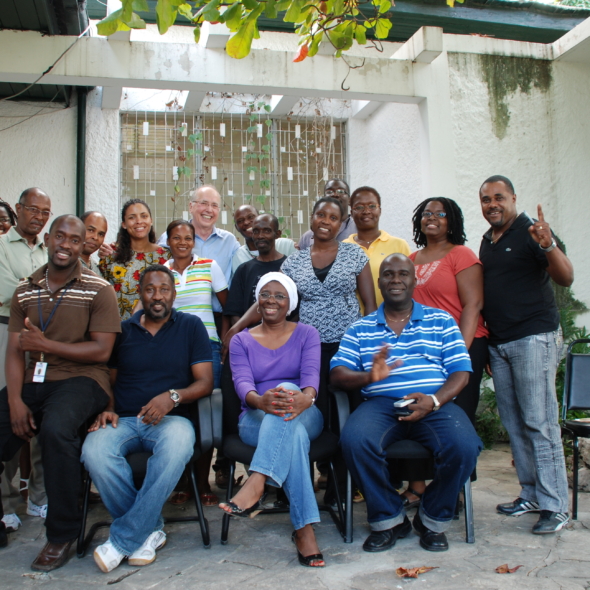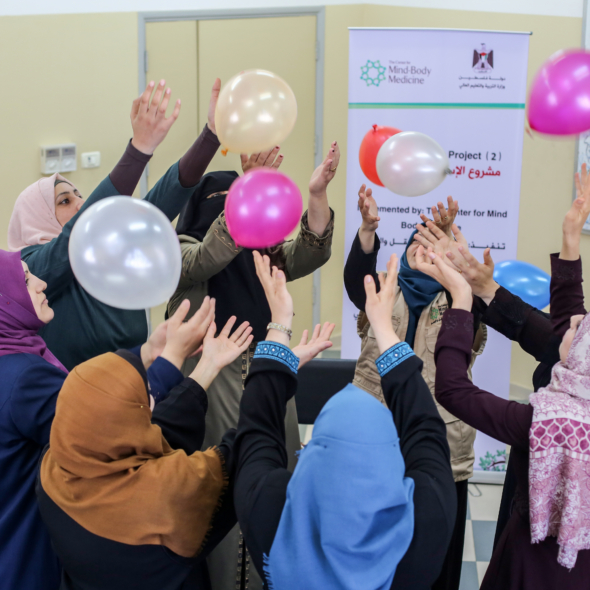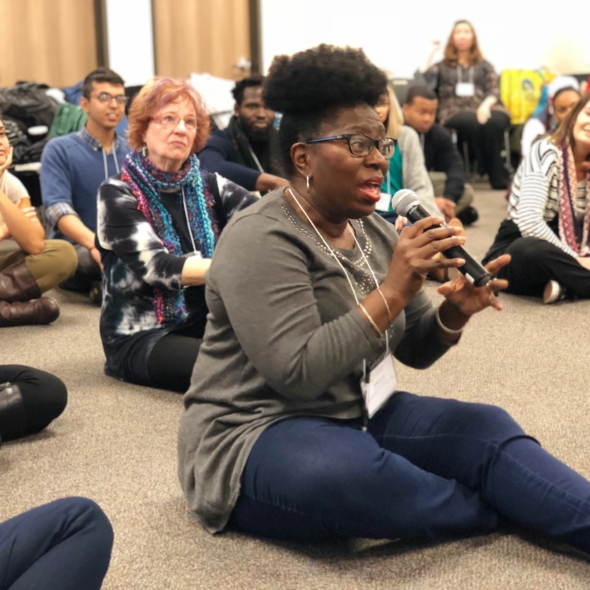We keep our sessions as simple and clear as we can: an introduction to fight-or-flight, stress, and trauma, answers to their questions, and three lessons.
Here they are:
1. Slow deep breathing with the belly soft. This, we explain, is the antidote to the flight or flight and stress response that the earthquake has inscribed in the kids’ minds and bodies. Soft belly will quiet their physiology, slow their racing thoughts, give them a little perspective on the flashbacks of dead bodies, the horror of loss and the ambush of fearful anticipation. Knowing—feeling—that they can breathe deeply and relax, they will have a small but important sense of control in world where so much—whether or not they can concentrate or sleep, where they live and how they will make a living—is, or feels, beyond their power to affect.
You can experience a relaxing guided Soft Belly meditation here, at The Center for Mind-Body Medicine’s website.
2. Later we do some shaking and dancing so they can let go of fixed patterns of physical tension and mental preoccupation; can feel their bodies moving freely; can raise their energy, lift their mood, and lower their anxiety. They clap and laugh and shout and afterwards, flop happily onto their hard seats.
3. We also explain the value of sharing here in the classroom, at home, or with a friend, the pain they feel and the fears and concerns that arise.
Many of the kids would like us to do more, to tell them where they can go to practice the techniques and talk to others. For now, I say, “you have each other and your families. We are giving you these techniques, written in French. Practice them at home and we will come back to your school. Soon we will be training many people, including some of your teachers, to do this with you.”
The story of how CMBM’s model helped Andre, a Haitian boy, overcome feelings of grief and guilt, coming soon . . .


